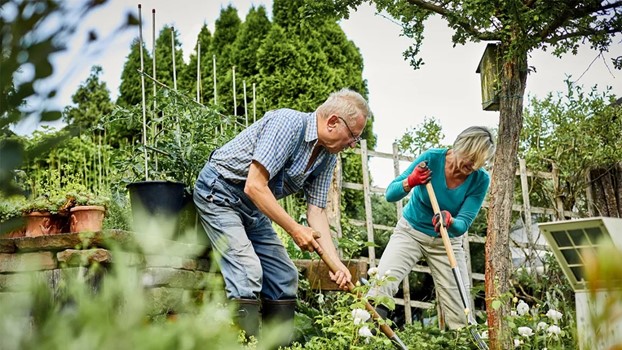Feeling Thirsty? Time to Drink Water!
As we sweat our way through the hottest months of the year, it is important to make sure we are adequately replenishing all of the fluid we are potentially losing. Between beach vacations, family picnics, and holiday parades, it can be easy to forget the last time you took a sip of water or find yourself in places where there isn’t any nearby. Below you will learn more about what dehydration is, how you can spot it, why it is particularly relevant to the elderly population, and what you can do to prevent it!

What is dehydration?
Dehydration is defined as a dangerous loss of fluid from the body which can occur through illness via diarrhea and vomiting, sweating, or simply not consuming enough liquids. Dehydration can happen to anyone at any age, but it is particularly dangerous and more prevalent in the older population.
How does it affect the elderly?
For a number of reasons, older individuals are more susceptible to fluid loss and dehydration. In general, seniors have less total body water volume than younger adults and children. On top of this naturally lower level of water in their bodies, many older adults have conditions and are taking medications that can affect hydration levels and increase susceptibility to dehydration.
Furthermore, research has shown that one’s sense of thirst decreases as they get older. This decreased sense of thirst can result in underconsumption of water or not realizing one’s thirst until early dehydration has already begun to set in. In some cases, decreased mobility interferes with an older individual’s ability to get up and pour themselves a regular glass of water. Water is a critical component in nearly every function in the human body, and it comes as no surprise that dehydration is commonly behind hospitalizations and illness in the older adult population.
Signs and symptoms
As we discussed, many older adults will not realize they are thirsty until they are already in the early stages of dehydration. This makes spotting dehydration tricky and staying on top of hydration even more important. What you can look out for, especially in the older population, is extreme thirst, less frequent trips to the bathroom, dark-colored urine, fatigue or tiredness, dizziness and confusion. If you notice lasting signs and symptoms in yourself or your loved one, be sure to call a doctor.
Preventing dehydration
Instead of waiting until signs and symptoms of dehydration set in, planning ahead and implementing hydration tactics is the best way to protect against dehydration. For the older adult, there are quite a few ways to incorporate fluids without just forcing glass after glass of water, which can admittedly get boring and can also leave them running to the bathroom every five minutes. If you or a loved one that you are caring for struggles with drinking water, mixing half juice and half water can elevate the taste and make drinking fluids more enjoyable. Be mindful of the older adults with conditions such as diabetes, where sugar consumption will need to be monitored and carefully controlled. Many foods, especially fruits and vegetables, are full of water, which can aid in getting enough hydration if eaten throughout the day. Additionally, consider spacing out fluid and water consumption across a longer period of time during the day so you can tolerate the fluid while remaining hydrated and avoid bloating. Especially for the active older adult, electrolyte supplement packets or beverages can be a useful tool in preventing dehydration. Relevant electrolytes include sodium (salt), potassium, and glucose, and additional vitamins can add benefit. In order for our bodies to uptake water, there must be a high enough concentration of electrolytes and sugars present, which these packets provide.
Drinking these in addition to plain water results in quicker and more efficient hydration. When selecting these electrolyte supplements, be sure to note the concentration of electrolytes versus sugar ratio, as some popular “sport drinks” have higher sugar concentrations, which will be counterintuitive to your hydration status. If you only have access to these higher sugar beverages, use the half and half method of beverage to water to dilute your drink. If you don’t have access to electrolyte or sports drinks, you can make your own! Take your favorite juice, combine it with water, and then add a pinch of salt. Consider purchasing a large water bottle or tumbler that can provide adequate hydration throughout the day and holds enough fluid to require less trips to the filter. Always be aware that your loved one could have co-conditions that require specific fluid monitoring and check with their doctor before making changes to their diet.

References:
Image 1 – https://unsplash.com/s/photos/glass-of-water
Cleveland Clinic – https://health.clevelandclinic.org/drink-up-dehydration-is-an-often-overlooked-health-risk-for-seniors/
Mayo Clinic –


